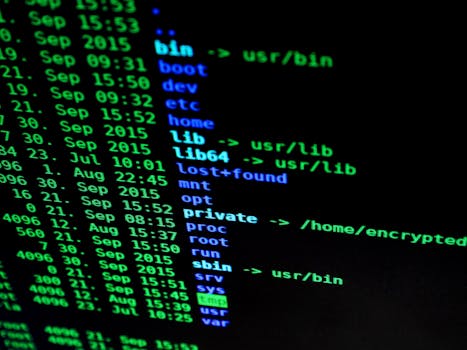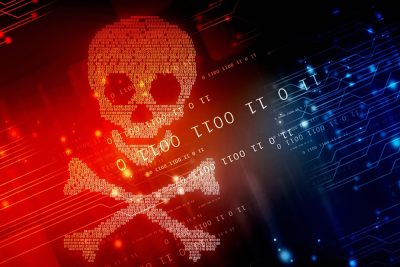Introduction
In today’s digital age, the safety of your business data is paramount. For small businesses, especially, navigating the complex landscape of network security can be daunting. But it needn’t be – with the right knowledge and practices in place, securing your business network can become an integral part of your operations. This guide on ’10 Essential Network Security Best Practices for Small Businesses’ will provide you with the necessary insights into the world of network security.
Understanding Network Security
Network Security is a broad term encompassing various policies, procedures, and technologies designed to protect your network and data from attacks, unauthorized access, or data theft. This can include measures like using firewalls, antivirus software, and intrusion detection systems. The objective is to ensure that your business’ digital infrastructure and data are secured against potential threats, which can range from malware attacks to data breaches.
Importance of Network Security for Small Businesses
For small businesses, network security is not just an IT concern; it’s a business survival issue. Why? Because data breaches can have serious financial and reputational consequences. A single security breach can lead to loss of sensitive customer data, disruption of business operations, and even hefty fines for non-compliance with data protection laws.
Moreover, small businesses often become the prime targets for cyberattacks because they typically have fewer resources to invest in network security compared to larger enterprises. This makes it crucial for small businesses to follow best network security practices to safeguard their business data and maintain customer trust.
In the following sections, we will delve into the top 10 essential network security best practices that small businesses should adopt to protect their digital assets. These practices range from regular network audits to setting appropriate access controls, ensuring regular updates of antimalware software, and more. So, stay tuned to ensure your small business is taking all the necessary steps to fortify its network security.
1. Regular Network Audits
Importance of Regular Network Audits
A network security journey begins with an understanding of your current position. Regular network audits are akin to a doctor’s check-up for your business’s IT infrastructure. They help identify potential weak spots in your network, such as security vulnerabilities, unused applications, and open ports that could be exploited by malicious entities.
Just as health issues can be more effectively managed when detected early, potential network security threats can be mitigated before they turn into full-blown crises. Regular audits aren’t just a one-off task but an ongoing activity that ensures continuous protection against evolving threats.
How to Conduct a Network Audit
Conducting a network audit requires a thorough inspection of your network’s current state. This includes examining the presence of security vulnerabilities, looking for unused or unnecessary applications, checking for open ports, and ensuring the functionality of anti-virus/anti-malware and malicious traffic detection software.
Moreover, for businesses that rely on third-party vendors, it’s crucial to conduct vendor assessments to identify any additional security gaps they might introduce to your network. Institutions like the SANS Institute provide useful reference documents to assist in this process.
After identifying potential issues, the next step involves updating your security policies and implementing solutions to address identified vulnerabilities. This might include disabling unnecessary open ports or unused applications, updating anti-malware software, or enhancing your firewall security.
Remember, network security is an ongoing effort. Conducting regular audits is an essential first step in establishing network security best practices that will protect your small business from potential cyber threats. Your business’s network security is essential, and the team at Upper Echelon Technology Group is here to support you every step of the way.
2. Updating Security Policies
After establishing the importance of regular network audits, the next vital step in maintaining robust network security is updating your security policies. Understanding why this is crucial and how to execute these updates effectively is key to ensuring your small business is always protected.
Why Updating Security Policies is Crucial
In an era of rapidly evolving cyber threats, sticking to outdated security policies is like leaving the front door of your business wide open. It’s an invitation to cybercriminals. These policies are essentially your rules of engagement in the digital world. They dictate how your business protects sensitive data and operational requirements.
A study by the SANS Institute highlighted that many organizations fail to review and update their security policies regularly, leaving them vulnerable to newer, more sophisticated threats. The lack of communication of these policies to both IT staff and end-users often exacerbates the situation.
Hence, reviewing and updating your security policies isn’t just a recommended best practice; it’s a vital part of your network security defense strategy.
How to Update Security Policies to Meet Current Business Requirements
Updating security policies requires a pragmatic approach. It begins with a thorough review of your current policies, followed by identifying gaps and areas of improvement. It’s important to ensure your policies address current business operational requirements and changes in security conditions.
One effective method is to use reference documents published by organizations like the SANS Institute. These documents can guide you in reexamining and updating your policies, such as having a formal directive on instituting and executing changes.
After updating the policies, it’s equally crucial to communicate these changes to all relevant parties, including IT staff and end users. This step ensures everyone understands the updated policies and knows how to adhere to them.
Remember, Upper Echelon Technology Group is here to help your small business navigate these updates. We understand that security isn’t a one-time event, but a continuous journey. We can assist you in regularly reviewing and updating your security policies to ensure your business maintains a strong security posture.
By keeping your security policies updated, you’re taking a proactive stance against cyber threats, safeguarding your business, and fostering a culture of security awareness in your organization.
3. Data Backup and Recovery Plan
In today’s digital environment, where data breaches are becoming alarmingly commonplace, having a robust data backup and recovery plan is not just a recommendation; it’s a necessity.
Importance of Data Backup and Recovery Plan
Backups are your business’s safety net, offering you a second chance when data is accidentally deleted, corrupted, or maliciously attacked. A comprehensive data backup and recovery plan can make the difference between a minor hiccup and a major disaster. Unfortunately, businesses are no longer asking if a data breach will occur, but rather when it will happen. The reality is, in a world where ransomware attacks are on the rise, affecting organizations across industries, it’s crucial to back up both operationally significant and highly sensitive data.
How to Implement a Data Backup and Recovery Plan
The first step in implementing a data backup and recovery plan is identifying what data needs to be backed up. This could be everything from critical business files to customer databases. Once you’ve identified what data is important, it’s time to decide how often the data needs to be backed up. This could be daily, weekly, or even several times a day, depending on the nature of your business and the level of risk you’re willing to accept.
Next, select a suitable backup method. This could involve local backups on external hard drives or network-attached storage (NAS) devices, or cloud-based backups, which offer the advantages of scalability and off-site storage. In many cases, a combination of local and cloud backups (a hybrid approach) can provide the best of both worlds.
Finally, it’s not enough to simply have a backup; you need a recovery plan as well. This involves defining the steps that need to be taken to restore data from a backup in the event of data loss. It’s important to test this plan regularly to ensure it works as expected and to train your staff in its execution.
Remember, a well-implemented data backup and recovery plan can minimize downtime, limit costs, and provide peace of mind in the face of an increasingly threatening digital landscape. As a part of your network security best practices, it’s a crucial safeguard for your business.
4. Data Encryption and Classification
In the ever-evolving digital age, data is the lifeblood of any business. But it’s not enough to merely have data; you must also protect it. That’s where data encryption and classification come in.
Importance of Data Encryption and Classification
Data encryption plays a key role in securing your organization’s most valuable and sensitive information. It transforms your data into a code that can only be accessed with a decryption key. This means that even if malicious actors manage to access your data, they won’t be able to understand or misuse it without the key.
But not all data is created equal. Some files are more sensitive than others, and they require different levels of protection. This is where data classification comes into play. It involves categorizing your data based on its sensitivity, allowing you to apply appropriate levels of security to different types of data. This helps in ensuring the right level of protection is assigned to the right data, improving overall security and reducing unnecessary costs.
How to Encrypt and Classify Data
To implement data encryption, IT organizations need to periodically assess data classifications and employ encryption where appropriate. For instance, customer data, financial records, and strategic plans could be classified as highly sensitive and thus require encryption.
A variety of encryption tools are available in the market. However, it’s crucial to choose one that fits your organization’s specific needs. You can consult with cybersecurity experts, like those at Upper Echelon Technology Group, to find the best encryption tools for your business.
When it comes to data classification, it’s important to start by identifying the different types of data your business handles. This could range from public data, like marketing materials, to confidential data, like internal communications. Once you’ve identified these categories, you can assign appropriate security measures to each one.
In addition to encryption and classification, Virtual Private Networks (VPNs) can provide another layer of protection for employees who may have to access sensitive files from remote locations. A VPN creates a secure connection over the internet, effectively cloaking your online activities and making it much harder for cybercriminals to access your data.
Data encryption and classification are vital elements of network security best practices. By ensuring that your data is properly protected, you’re not just securing your business; you’re also building trust with your clients and employees. And in today’s digital world, that trust is invaluable.
5. Regular Updates of Antimalware Software
Just as a mechanic wouldn’t send a car onto the road without regular tune-ups, your business shouldn’t operate without frequently updated antimalware software.
Why Regular Updates of Antimalware Software are Essential
Stepping into the digital space without updated antimalware software is like entering a battlefield without armor. Outdated antivirus or antimalware software ranks among the most common gaps in enterprise security. Cybercriminals continuously evolve their techniques, creating new malware that can slip past outdated defenses. Regularly updating your antimalware software ensures that your business is shielded against the latest threats, keeping your network secure and your data protected.
How to Update Antimalware Software Regularly
Updating your antimalware software isn’t a task that should be left to hope and happenstance. It requires a proactive approach. Security professionals should conduct periodic checks on their antimalware software, making sure all devices are running the most recent security software. This includes not only computers, but also mobile devices, which can often be overlooked.
Moreover, IT departments should automate their patch management whenever possible. This ensures that updates are applied as soon as they become available, rather than waiting for manual implementation. By doing so, you can drastically reduce the window of vulnerability between the release of a new update and its application to your systems.
In addition, remember to regularly scan your systems with the updated software. New malware threats might have slipped past your old defenses, and only a full system scan with the updated software can ensure they are detected and removed.
Upper Echelon Technology Group understands the importance of regular updates to antimalware software. They offer managed IT services that include 24x7x365 network protection, ensuring your technology serves your business instead of being a potential vulnerability.
6. Setting Appropriate Access Controls
In the ever-evolving world of cybersecurity, a key line of defense is setting appropriate access controls. This involves defining who has the rights to access certain resources within your network, and under what circumstances.
Importance of Setting Appropriate Access Controls
Without proper access controls, unauthorized users can potentially gain access to your confidential business data. This could lead to data breaches, which can have devastating consequences including financial losses, damage to your reputation, and even legal penalties. Therefore, implementing robust access controls is vital in protecting your small business.
Upper Echelon Technology Group, a cybersecurity-focused managed services provider, emphasizes the significance of access controls. They believe that setting appropriate access controls is not just about protection, but also about optimizing your network’s performance.
How to Set Appropriate Access Controls and Employ Multifactor Authentication
Setting appropriate access controls starts with establishing clear policies about who can access what resources. This often involves creating user profiles with different access levels based on roles within your business. For example, an employee in the marketing department might not need access to the financial records, while those in the finance department might not need access to the customer relationship management system.
Further enhancing the security, multifactor authentication (MFA) should be employed. MFA requires users to provide two or more verification factors to gain access to a resource, such as a network or database. This could be something they know (like a password), something they have (like a mobile device), or something they are (like a fingerprint).
Automated password management systems can also help simplify the process by requiring passwords to be of a certain length and complexity, and to be changed frequently. These systems can also prevent the reuse of old passwords.
Upper Echelon Technology Group is an expert in setting up appropriate access controls and employing multifactor authentication. Their personalized approach to IT Managed Services ensures that your access control system is tailored to your specific business needs, providing a balance between security and usability. They understand that access controls are not a one-size-fits-all solution, and can help you implement a system that is both secure and efficient, allowing you to focus on your core business activities.
7. Establishing a Security Governance Structure
Your network security is only as strong as the team that governs it. Establishing a robust security governance structure is akin to having a skilled captain at the helm of your ship, guiding it through turbulent waters.
Importance of a Security Governance Structure
A well-defined security governance structure is crucial for small businesses. It provides a clear delineation of roles and responsibilities, ensuring that every individual involved in managing your network security knows their part. This structured approach can significantly reduce the risk of security lapses due to miscommunication or confusion.
But it’s not just about avoiding mishaps. A strong security governance structure also helps businesses strategically manage risks. Regulatory bodies like the International Organization for Standardization and the Payment Card Industry Security Standards Council underscore the importance of having an organization that specifies who is responsible for managing security and responding to cybersecurity events.
How to Establish and Communicate a Security Governance Structure
To establish an effective security governance structure, the first step is to define the roles and responsibilities. This involves identifying key individuals or teams who will manage risks and respond to incidents. Remember, clarity is paramount. Each role should have explicit responsibilities and authority levels to avoid ambiguity.
Next, consider performing periodic risk assessments to help prioritize vulnerability remediation. Regular assessments can shed light on potential weak spots in your network security, allowing you to address them proactively.
Once you’ve established your security governance structure, it’s essential to communicate it effectively throughout your organization. This ensures everyone understands their role in maintaining network security and reduces the chance of misunderstandings that could lead to security lapses.
At Upper Echelon Technology Group, we understand that establishing a robust security governance structure can be a daunting task for small businesses. But with our personalized approach to IT Managed Services, we can help you navigate this process, ensuring your network security is in capable hands.
8. User Education on Security Policies and Threat Environment
In a world where cyber threats are constantly evolving, staying one step ahead is vital. User education on security policies and threat environment is a critical component of network security best practices, especially for small businesses.
Importance of User Education on Security Policies and Threat Environment
Knowledge is power, and in the realm of network security, this statement couldn’t be more accurate. Just as a chain is only as strong as its weakest link, your network security is only as robust as your least informed employee. Studies have shown that a significant number of cyberattacks, including phishing and social engineering attacks, exploit human error. In a 2017 survey conducted by Dell, over 75% of employees admitted they would share confidential data under certain circumstances. This highlights the essential need for continual education of end users on company security policies and the current threat environment.
How to Educate Users on Security Policies and Threat Environment
So, how can businesses effectively educate their users? This is where Upper Echelon Technology Group comes in. Our managed IT services extend beyond fixing tech issues and optimizing your network. We also focus on empowering your team through knowledge and awareness.
Firstly, we ensure that security policies are clearly communicated to all IT staff and end users in your organization. This involves explaining the rationale behind these policies and the potential consequences of non-compliance.
Next, we help you establish an ongoing education program. This includes regular updates on the evolving threat landscape and how it could impact your business. We leverage our expertise and resources to provide your team with realistic scenarios and practical tips on how to identify and respond to potential threats.
Lastly, we advocate for the incorporation of this education into your company’s culture. It should not be seen as a one-off event, but an integral part of the daily operations and overall business strategy.
In conclusion, educating users on security policies and the threat environment is not just about protecting your network today. It’s about building a resilient and aware workforce that can adapt to the challenges of tomorrow. With Upper Echelon Technology Group as your trusted IT partner, you can rest assured that your team will be equipped to handle any cyber threats that come their way.
9. Maintenance System for Security Infrastructure
Just as a well-oiled machine ensures smooth operations, an efficiently maintained security infrastructure keeps your network safe. This crucial aspect of network security can’t be overlooked, especially for small businesses where a single security breach can have devastating consequences.
Importance of a Maintenance System for Security Infrastructure
Maintaining a robust security infrastructure is akin to keeping your business’s immune system healthy. It fortifies your defenses against cyber threats and ensures that your security measures are always up-to-date and ready to tackle the ever-evolving landscape of cyber threats. Remember, it’s not enough to merely set up security systems; constant maintenance and updates are crucial to keep them effective.
To put it simply, a well-maintained security infrastructure is your business’s first line of defense against cyber threats. It ensures that all your systems, software, and controls are working optimally and are equipped with the latest security updates. Not only does it help in promptly identifying and addressing security issues, but it also minimizes downtime, thus ensuring business continuity.
How to Implement a Maintenance System for Security Infrastructure
Implementing a maintenance system for your security infrastructure doesn’t have to be a daunting task. It involves a few essential steps that can be easily integrated into your business operations.
Regular Monitoring and Adjustments: Your security systems should be regularly monitored to identify any anomalies or issues. Regular system audits and vulnerability assessments can be instrumental in this regard. It’s equally important to make necessary adjustments whenever incidents occur. This might mean updating software, changing access controls, or even revamping your entire security strategy.
Up-to-date Infrastructure: Ensure that all your software and systems are updated with the latest security patches. Outdated software is often an easy target for cybercriminals. Automating your patch management can ensure that updates are not missed.
Change Management: Any changes in security policies and practices should be properly managed and communicated to all relevant parties. This is especially important in a small business setting where employees often wear multiple hats and need to be kept informed about any changes that might affect their roles.
Regular Backups: Regular backups of your data are a crucial part of maintaining your security infrastructure. This ensures that even in the event of a security breach, your data can be quickly restored, minimizing business disruption.
Schedule Change in Network Name and Passwords: Regularly changing network names and passwords can prevent unauthorized access and enhance network security.
At Upper Echelon Technology Group, we understand that maintaining a secure network can be challenging for small businesses. We’re here to help, providing you with a personalized approach to IT Managed Services that not only solves your technology issues but also makes your team more efficient. With our expertise, you can focus on what you do best – running your business.
10. Staying Informed About Threat Environment
As a small business owner, the static nature of your cybersecurity strategy could be the chink in your armor. The terrain of cybersecurity threats is ever-evolving, with new vulnerabilities, attack vectors, and malicious strategies emerging every day. It’s a never-ending game of cat and mouse, with hackers on one side and your business on the other. In this high-stakes environment, ignorance isn’t bliss—it’s a recipe for disaster.
Importance of Staying Informed About Threat Environment
In the cybersecurity landscape, knowledge is power. Understanding the current threat environment is a crucial aspect of network security best practices. It helps you anticipate potential vulnerabilities, adjust your defense strategies, and prepare your team to respond effectively to security incidents. By keeping your ear to the ground, you can stay one step ahead of cybercriminals, significantly reducing the chances of a successful breach.
Moreover, staying informed about the threat environment is not just about understanding what’s out there; it’s also about understanding your business’s specific vulnerabilities. Cyberattacks are often opportunistic, targeting the weakest link in the chain. As your business evolves, new weak points may emerge, and it’s crucial to stay aware of these changes to ensure your security measures are up to date.
How to Stay Informed About Changes in the Threat Environment and Advances in Threat Identification and Mitigation
One of the best ways to stay informed about the changing threat environment is to subscribe to cybersecurity news sources and threat intelligence feeds. These resources provide timely updates on emerging threats, new vulnerabilities, and the latest security best practices.
Additionally, consider participating in industry forums and networking groups, where you can learn from the experiences and insights of other businesses and cybersecurity professionals.
If you’re working with a cybersecurity-focused managed services provider, like Upper Echelon Technology Group, leverage their expertise to stay informed. They can provide regular updates on the changing threat landscape, advise you on potential vulnerabilities specific to your business, and guide you on the latest advances in threat identification and mitigation.
Lastly, regular cybersecurity training for your team is essential. This not only equips them with the knowledge to identify and respond to threats but also fosters a culture of security awareness within your organization.
Remember, in the field of cybersecurity, complacency can be costly. Staying informed about the threat environment is an ongoing effort, not a one-time task. By keeping abreast of the ever-changing cyber threat landscape, you can build a robust defense strategy that adapts and evolves with your business, safeguarding your valuable data and ensuring your peace of mind.
Conclusion
Recap of Network Security Best Practices
In the rapidly evolving digital world, network security is no longer an option, but a necessity for small businesses. The ten essential network security best practices we have discussed include regular network audits, updating security policies, implementing a robust data backup and recovery plan, and ensuring proper data encryption and classification.
We also highlighted the importance of regular updates to antimalware software, setting appropriate access controls, and establishing a secure governance structure. Additionally, we underscored the significant role of end-user education about security policies and the threat environment. Lastly, we emphasized the need for a maintenance system for security infrastructure, and the crucial requirement of staying informed about changes in the threat environment and advances in threat identification and mitigation.
How Upper Echelon Technology Group LLC Can Help Implement These Best Practices
Upper Echelon Technology Group LLC, a cybersecurity-focused managed services provider with a personalized approach to IT Managed Services, is uniquely positioned to help small businesses in Wilmington, DE implement these best practices. With their expert team, they can help solve your technology issues, make your team more efficient, and significantly improve your company’s profitability through technology.
They offer a comprehensive portfolio of managed IT services, ensuring your network is protected and optimized 24x7x365. From conducting regular network audits to updating your security policies to meet current business requirements, Upper Echelon Technology Group LLC offers a holistic approach to network security. They can also assist in implementing a data backup and recovery plan, encrypting and classifying your data, and ensuring regular updates of your antimalware software.
Moreover, their services extend to setting appropriate access controls and employing multifactor authentication, establishing and communicating a security governance structure, and educating your users on security policies and the evolving threat environment. They provide a robust maintenance system for your security infrastructure and keep you informed about changes in the threat environment and advances in threat identification and mitigation.
By choosing Upper Echelon Technology Group LLC, you’re not just opting for a service provider, but a partner committed to your business’s security and success. They understand that relationships matter and people come first, and they bring this ethos to every aspect of their service delivery, ensuring you can focus on what matters most – running your business.









